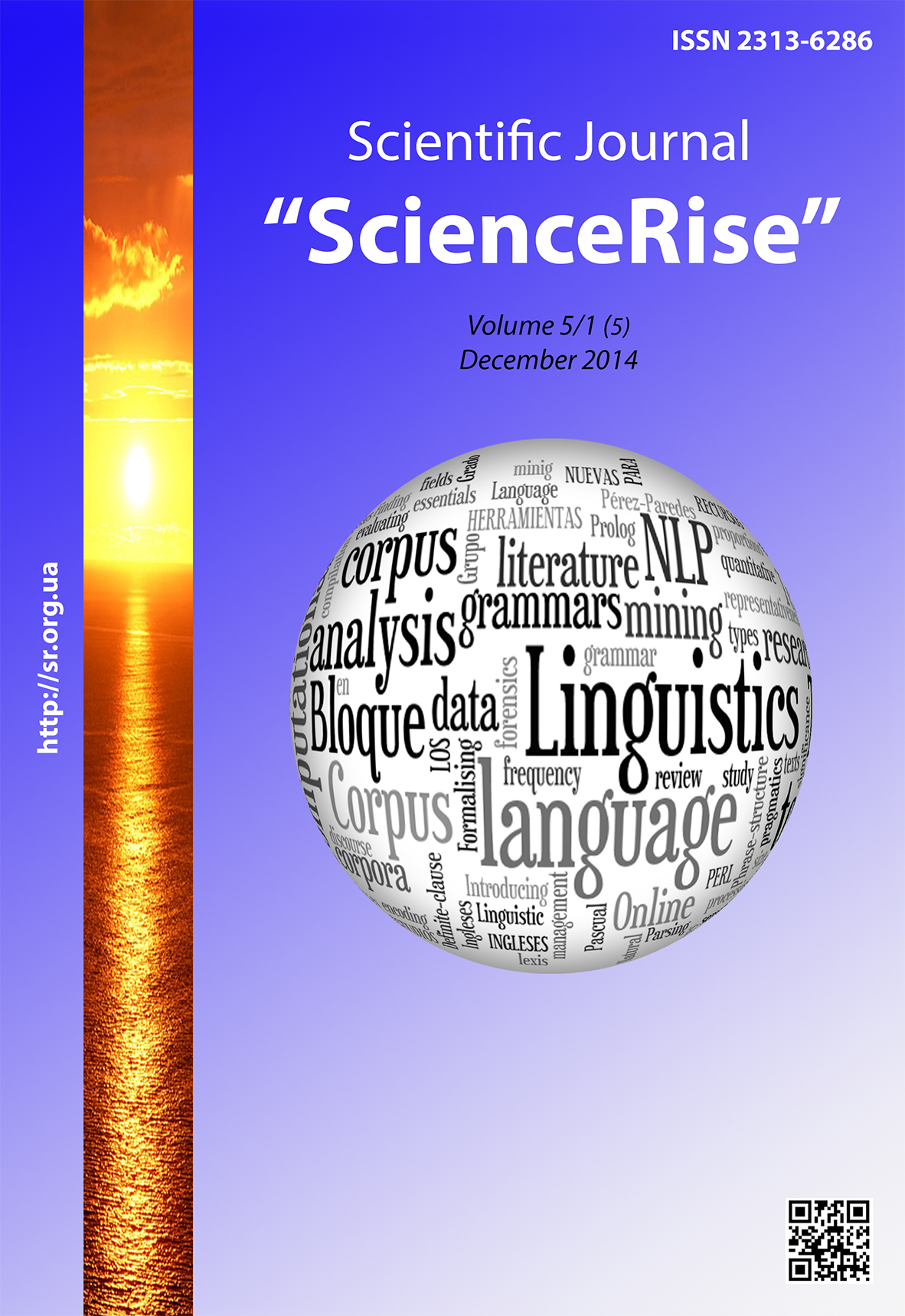Phytomorphic metaphor in the concept envy in the religious discourse of the church fathers
DOI:
https://doi.org/10.15587/2313-8416.2014.33580Keywords:
conceptual features, conceptual metaphor, cognitive model, concept ENVY, religious discourse, Church fathersAbstract
This article deals with the research results of metaphoric conceptualization of categories of the human inner world within the Christian religious discourse. Basing on the representative texts of Church fathers, the means of secondary nomination of the concept 'envy' are analyzed. They are represented by phytomorphic images. Generic and specific conceptual features of the ‘envy’-plant are discovered. The importance of phytomorphic code in the Christian religious worldview is pointed. The pragmatic potential of the phytomorphic metaphor is determined.
References
Lakoff, G.; Ortony, A. (Ed.) (1993). The contemporary theory of metaphor // Metaphor and Thought. Cambridge: Cambridge University Press, 245. doi: 10.1017/cbo9781139173865.013
Abraham, W. (1975). A linguistic approach to metaphor. Lisse, Holland: Peter de Ridder Press, 54.
Kövecses Z. (2002). Metaphor: A practical introduction. New York: Oxford University Press, 4.
Lakoff, G., Johnson. M. (1980). Metafors We Live By. Сhicago: University of Сhicago Press, 12.
Langacker. R. W.; Barlow, M., Kemmer, S. (Eds.) (2000) A dynamic usage-based model // Usage-based models of language. Stanford, California: Center for the Study of Language and Information, 4.
Migne, J.-P. (Ed.) (1857–1866). PG – Patrologiae cursus completus. Series graeca. Paris: Imprimerie Catholique, 1–161.
Migne, J.-P. (Ed.) (1844–1864). PL – Patrologiae cursus completus. Series latina. Paris: Imprimerie Catholique, 1–221.
Sancti Ephraem Syri opera omnia Opera omnia quae exstant Graece, Syriace, Latine іn sex tomos distributa (1746). Romae: Typographia Vaticana J. M.H Salvioni, 3.
Paisios of Mount Athos, Elder, (2008). Sermons. Passion and Virtue. Moscow: Sviataja Gora, 5.
Downloads
Published
Issue
Section
License
Copyright (c) 2014 Оксана Василівна Ясіновська

This work is licensed under a Creative Commons Attribution 4.0 International License.
Our journal abides by the Creative Commons CC BY copyright rights and permissions for open access journals.
Authors, who are published in this journal, agree to the following conditions:
1. The authors reserve the right to authorship of the work and pass the first publication right of this work to the journal under the terms of a Creative Commons CC BY, which allows others to freely distribute the published research with the obligatory reference to the authors of the original work and the first publication of the work in this journal.
2. The authors have the right to conclude separate supplement agreements that relate to non-exclusive work distribution in the form in which it has been published by the journal (for example, to upload the work to the online storage of the journal or publish it as part of a monograph), provided that the reference to the first publication of the work in this journal is included.

